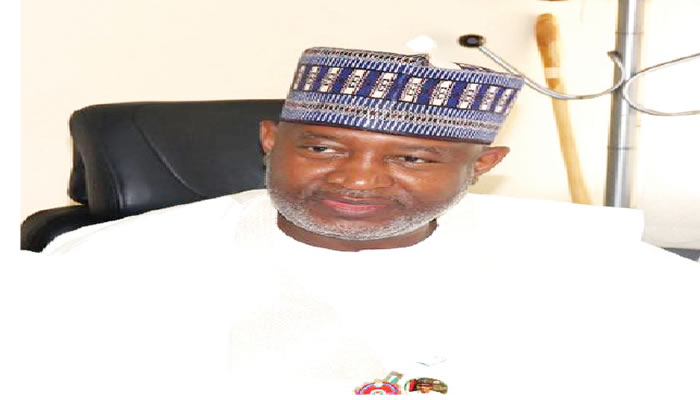
Mixed reactions have accompanied the clamour for the construction of a second runway in Abuja airport, FUNMI FABUNMI writes
There has been an age-long debate on the construction of a second runway at the Nnamdi Azikiwe Airport, Abuja. The recent call by the National Assembly Joint Committee on Aviation for the government to take on the construction of a second runway in Abuja airport has rekindled the debate among aviation stakeholders.
The lawmakers claimed a second runway in the airport would address the challenge of having to close the existing runway for hours whenever the President is using the airport or whenever there is an incident or accident..
Despite plans to build a second runway, many stakeholders argue that the current one is greatly underutilised. They believe that the aviation sector has more pressing issues to address, such as insufficient infrastructure, outdated facilities, ineffective management practices, and a lack of policy implementation. As a result, they argue that building a second runway should not be the country’s top priority at this time.
The country’s airports currently process less than 30 per cent of the country’s annual passenger traffic. And despite the N1bn spent on remodelling airports over the past decade, they cannot still compete with major airports across the world. Nigeria’s 26 airports process only 15 million passengers annually, despite the country’s over 200 million population. The airport in Lagos alone accounts for 65 per cent of the country’s air traffic.
Some aviation analysts, who believe there was no need for a second runway in the country’s airports, claimed the existing runway at Nnamdi Azikiwe Airport was not being fully utilised, as the airport processes less than 30 per cent of the country’s 15 million annual passenger traffic. According to them, constructing a new runway may not necessarily solve the issue of underutilisation if other factors such as poor management and inadequate infrastructure are not addressed.
In comparison, United Kingdom’s Heathrow Airport processes 78 million passengers annually in the last decade, in a country with about 65 million population, according Statista, an online data platform. Heathrow is the seventh busiest airport in the world by international passenger traffic.
Currently, Heathrow boasts of about 96 per cent utilisation, with an aircraft taking off and landing every 45 seconds within the hours of 6am-11.30pm.
Whereas only 597 flights land and take off at Nigeria’s 26 airports daily, the number of flights landing and taking off daily at Heathrow Airport was 1,300.
Some aviation experts explained that the airport’s current requirements extend beyond the need for an additional runway. Instead, the airport necessitates significant infrastructural upgrades, which could best be achieved through Public-Private Partnerships. which services the country’s seat of power.
Those advocating a second runway hinged their arguments on the need to avoid the closure of the airports whenever there are challenges with the existing runways, as the second runaway will be operational. An aviation expert, who preferred not to be named in print, said, “A thorough feasibility study should be carried out to determine the actual need for a new runway, taking into consideration factors such as projected passenger traffic, aircraft types and sizes, operational requirements, environmental impact, and cost-effectiveness. The decision to construct a new runway should be based on sound analysis and should prioritise the efficient and safe operation of the airport.”
The Assistant Secretary of the Aviation Round Table, Olumide Ohunayo, stated that the economics associated with the construction of a second runway should be critically looked into. “Those who have one runway and have more flights have been able to maintain the runway over the years like Stansted Airport in London. We are saying that when you have one and cannot maintain it, how are you now going to maintain a second runway? The one you have must show that you have used it maximally before moving to a second one,” he noted.
According to him, the managers of the airport should get the necessary equipment so that they can quickly evacuate aircraft whenever there is an incident on the runway, to enable other planes use the runway.
“That’s our school of thought but the government is saying, ‘No, Abuja is a capital city. It needs a second runway irrespective of the number of landings.’ But these two runways are not provided with the economics to maintain it. Kaduna airport is an alternative if the Abuja runway is not available but because of security maybe that is why people are not looking at Kaduna airport, which is about an hour away.
“Where is the funding? Here is a country that has been borrowing money. In this situation, we do not have the fund and we are having astronomical rise in the exchange rate. Why don’t we just manage the single runway we have? The bottom line is that the Abuja single runway is sufficient if well managed and the necessary equipment for removing broken down aircraft and any other thing that might impede the runway are put in place and if the maintenance manual and periodic maintenance are followed judiciously.”
A former Director-General of the Nigerian Airspace Management Agency and CEO of Too Brass Aviation, Capt. Iyayi Roland, said the Federal Government had committed over 50 per cent of the required resources to the project already.
“The issue of operational efficiency of the airport company is what is called to question here. Gatwick airport has a single runway and is busier than Lagos and Abuja airports combined. At no time is it closed for more than an hour during its operating hours. Even, a rehabilitation of its runway was carried out without shutting down its operations. How was that possible? Smart thinking and good planning,” he noted.
A senior aviation expert, who preferred not to be named, also supported Ohunayo’s stance. He said, “What is the economics of a second runway relative to a once-in-a-decade incident? Runway count is a function of traffic demand, not incident mitigation. It is not a spare tyre. An efficient airport would have cleared the incident within a few very short hour(s) and reopened the airport.
“There is usually one emergency at a time, so two runways are not required for an emergency. That is, if a runway is disabled, it is expected that it will only be for a short time. The real issue remains capacity, not an emergency. Every airport has an alternative a few minutes away.”
According to him, it is great news that Abuja will have two runways in a short while and this is because capacity is required.
“The growing private airlines and the national carrier are expected to grow to meet the nation’s demand and positioning in the evolving marketplace where inter-African travel is expected to grow and Nigerian aviation is expected to seize this moment,” he asserted.
However, former Military Commandant at the Murtala Muhammed International Airport, Lagos, Group Capt. John Ojikutu (retd.), said, “I have said it repeatedly that none of our airports has the traffic to have the need for a second runway. I said this o the Uzodinma’s Committee on Aviation that neither Abuja nor Lagos has the traffic to be considered for a second runway. Heathrow Airport has over 40 million traffic annually and Johannesburg in South Africa has over 20 million traffic annually but the total traffic in the over 25 Nigeria Airports is less than 20 million of which Lagos alone is only about 8 million and Abuja about 6 million. So, what is the economic sense in building a second Runway for any?”
He acclaimed the country’s challenges were prodigal spending and the lack of or the neglect of the periodic maintenance of the necessary airport safety system and infrastructure, which the runways formed the most critical part.
“In short, none of our airports whatever their traffic now, deserves a second Runway,” he insisted.
Asia’s busiest single-runway airport is Chhatrapati Shivaji Maharaj International, which serves the Indian city of Mumbai. BOM as it is also called has two runways, which intersect in a manner that means that only one can be used at a time, thus making it a one-runway facility.
Despite this, Mumbai has significant operational capabilities. According to Business Traveler report in 2018, it handled 980 flights in 24 hours. Its previous record had been 974. In the 12-month period encompassing April 2021 to March 2022, almost 22 million passengers used this facility before the coronavirus pandemic. Its annual totals were close to 50 million.
Meanwhile, in the last 10 years, the Federal Government has spent over N1bn in airport remodelling, but experts argued the amount did not reflect in the country.
The Federal Airports Authority of Nigeria has been advised to intensify periodic maintenance programmes as recommended by the documents supporting the International Civil Aviation Organisation Annex 14 for aerodrome’s standards, which include the Lagos airport that was allegedly hurriedly done to get the Nigeria Civil Aviation Authority in anticipation of its concession.
One of the things the incoming government is going to inherit is the debate for and against a second runway for the Abuja airport.




